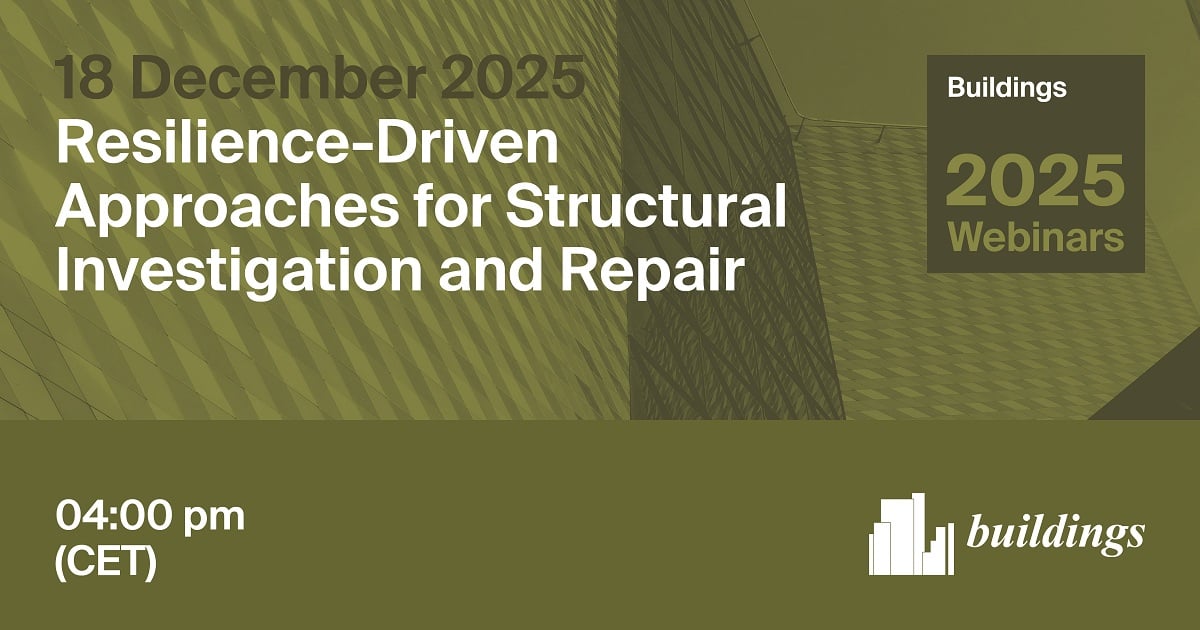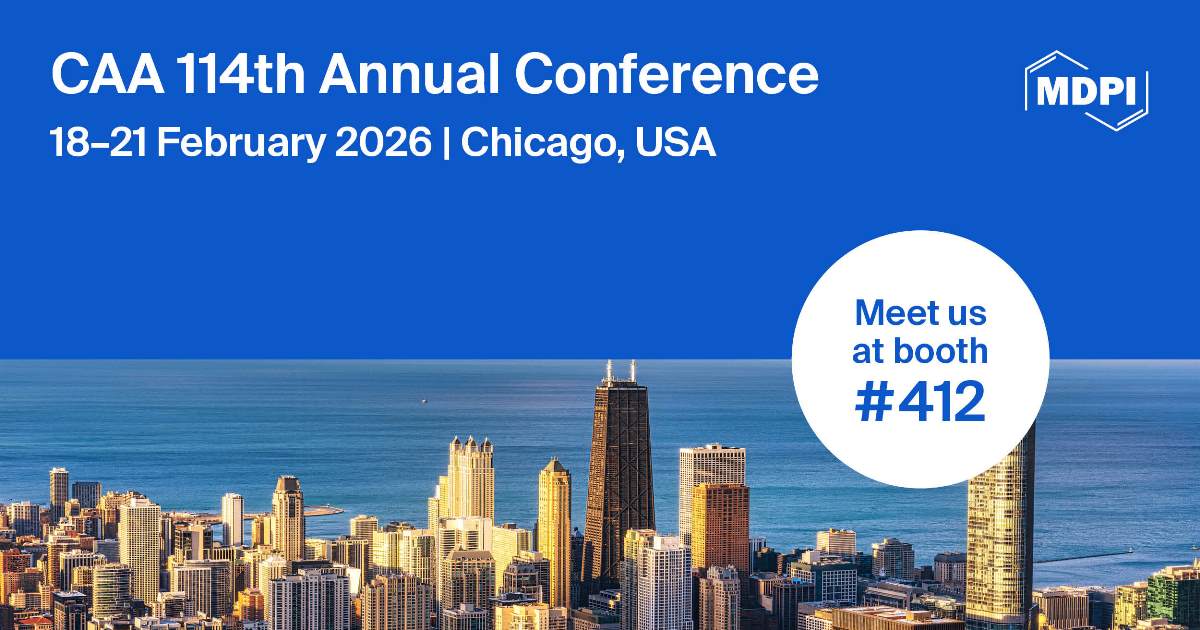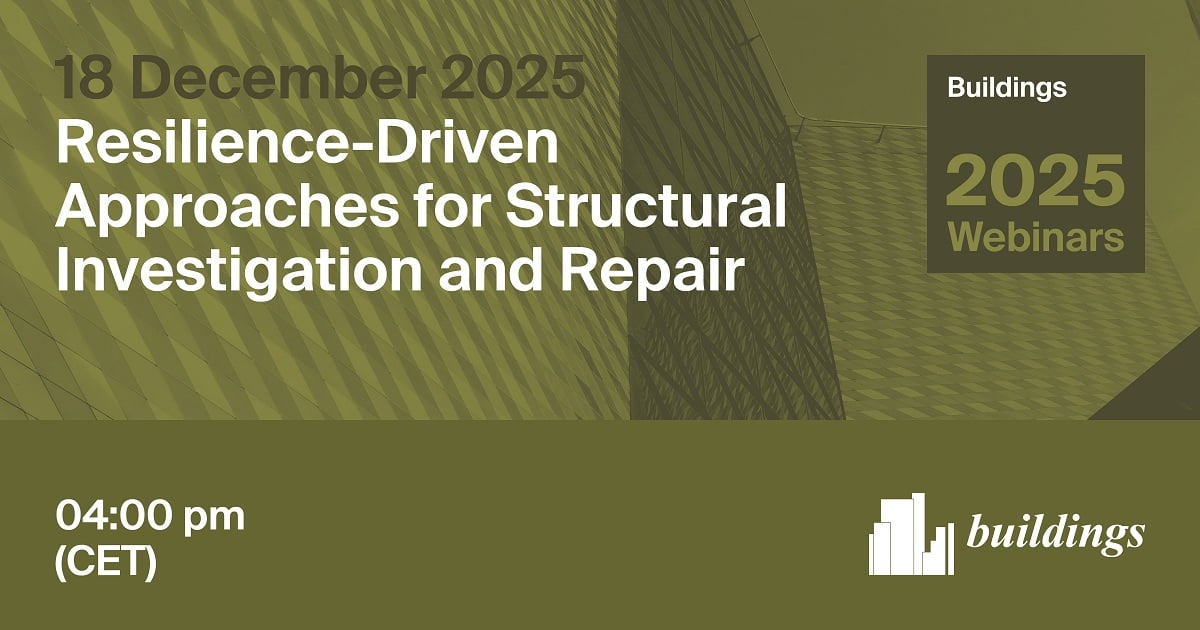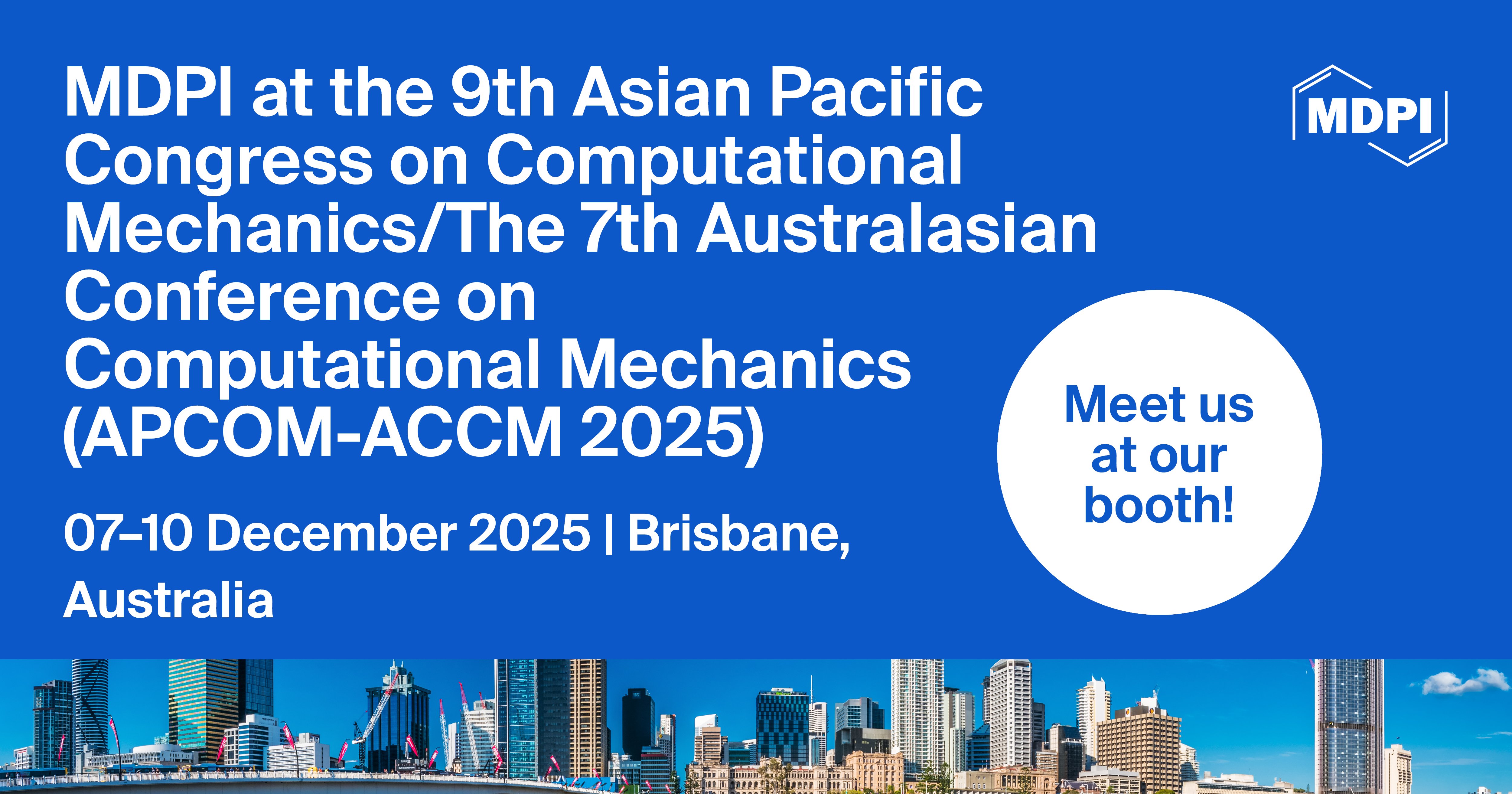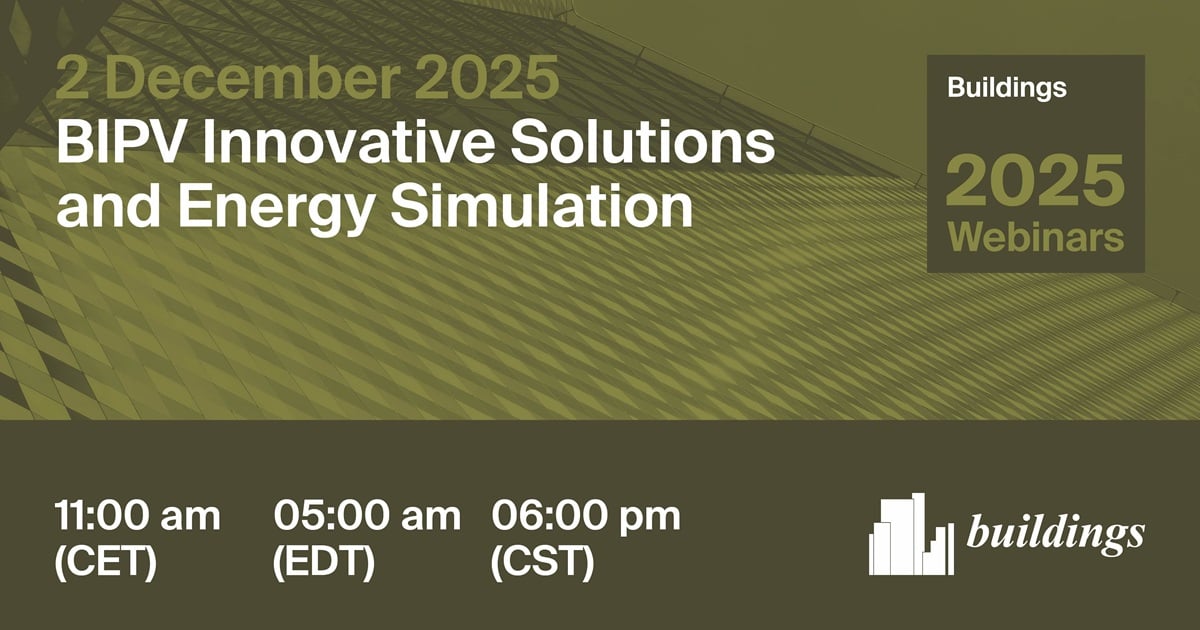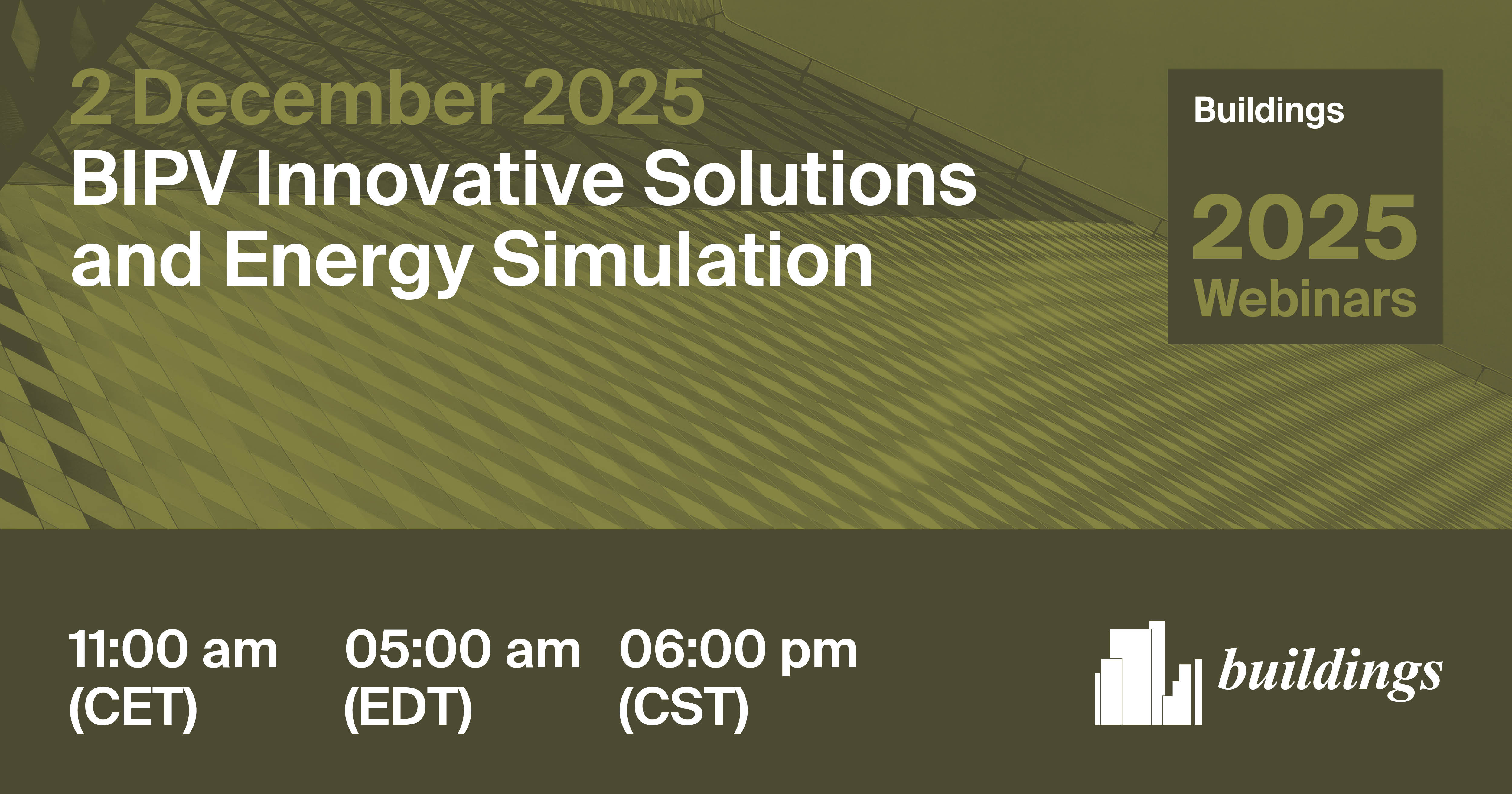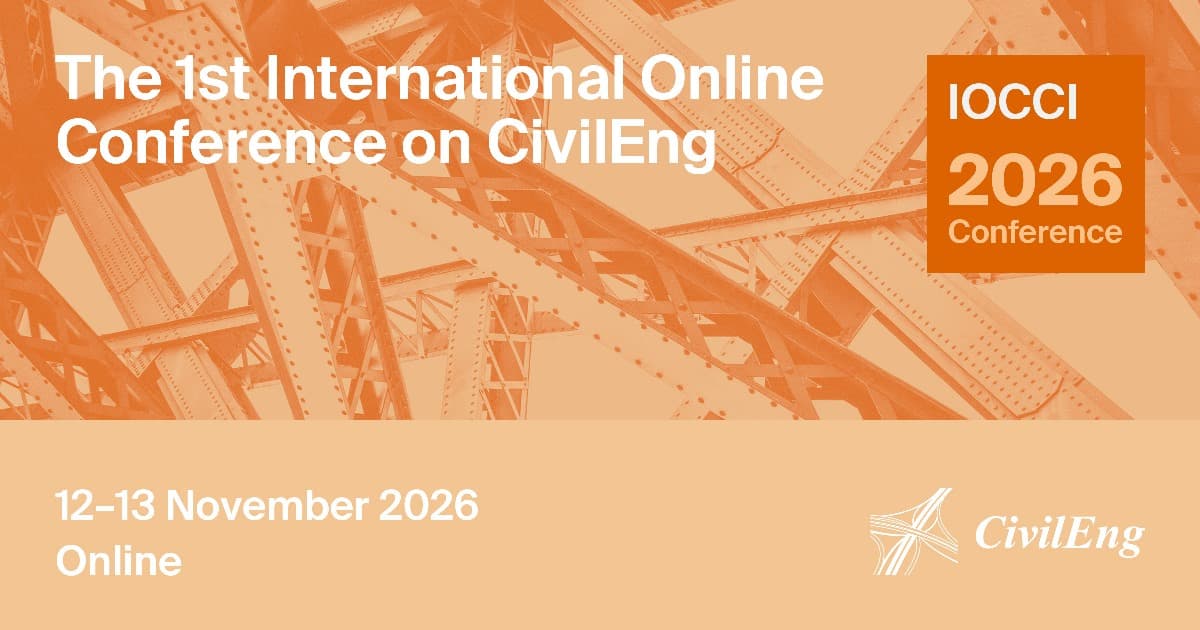- 3.1Impact Factor
- 4.4CiteScore
- 15 daysTime to First Decision
News & Conferences
Latest News & Announcements
Latest Conferences
Propose a Conference Collaboration
Promote and publicise your upcoming conference with MDPI.
All News & Conferences
News & Announcements
Buildings Webinar | Resilience-Driven Approaches for Structural Investigation and Repair, 18 December 2025
18 December 2025
News & Announcements
Meet Us at the CAA 114th Annual Conference, 18–21 February 2026, Chicago, USA
18 December 2025
MDPI Conference
Buildings Webinar | Resilience-Driven Approaches for Structural Investigation and Repair, 18 December 2025
18 - 18 December 2025
News & Announcements
Article Layout and Template Revised for Future Volumes
11 December 2025
News & Announcements
Interview with Prof. Dr. Eric Jing Du and His Research Team—Winners of the Buildings Best Paper Award
20 November 2025
2 - 2 December 2025
News & Announcements
Buildings Webinar | BIPV Innovative Solutions and Energy Simulation, 2 December 2025
13 November 2025
News & Announcements
MDPI Launches the Michele Parrinello Award for Pioneering Contributions in Computational Physical Science
6 November 2025
News & Announcements
MDPI INSIGHTS: The CEO's Letter #28 - WSF11, Nobel Laureates, Proofig AI, Romania Summit, STM and FBF
4 November 2025
News & Announcements
Meet Us Virtually at the 1st International Online Conference on CivilEng, 12–13 November 2026
30 October 2025
MDPI Conference
Meet Us Virtually at the 1st International Online Conference on CivilEng, 12–13 November 2026
12 - 13 November 2026
of 18


